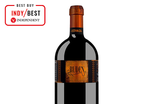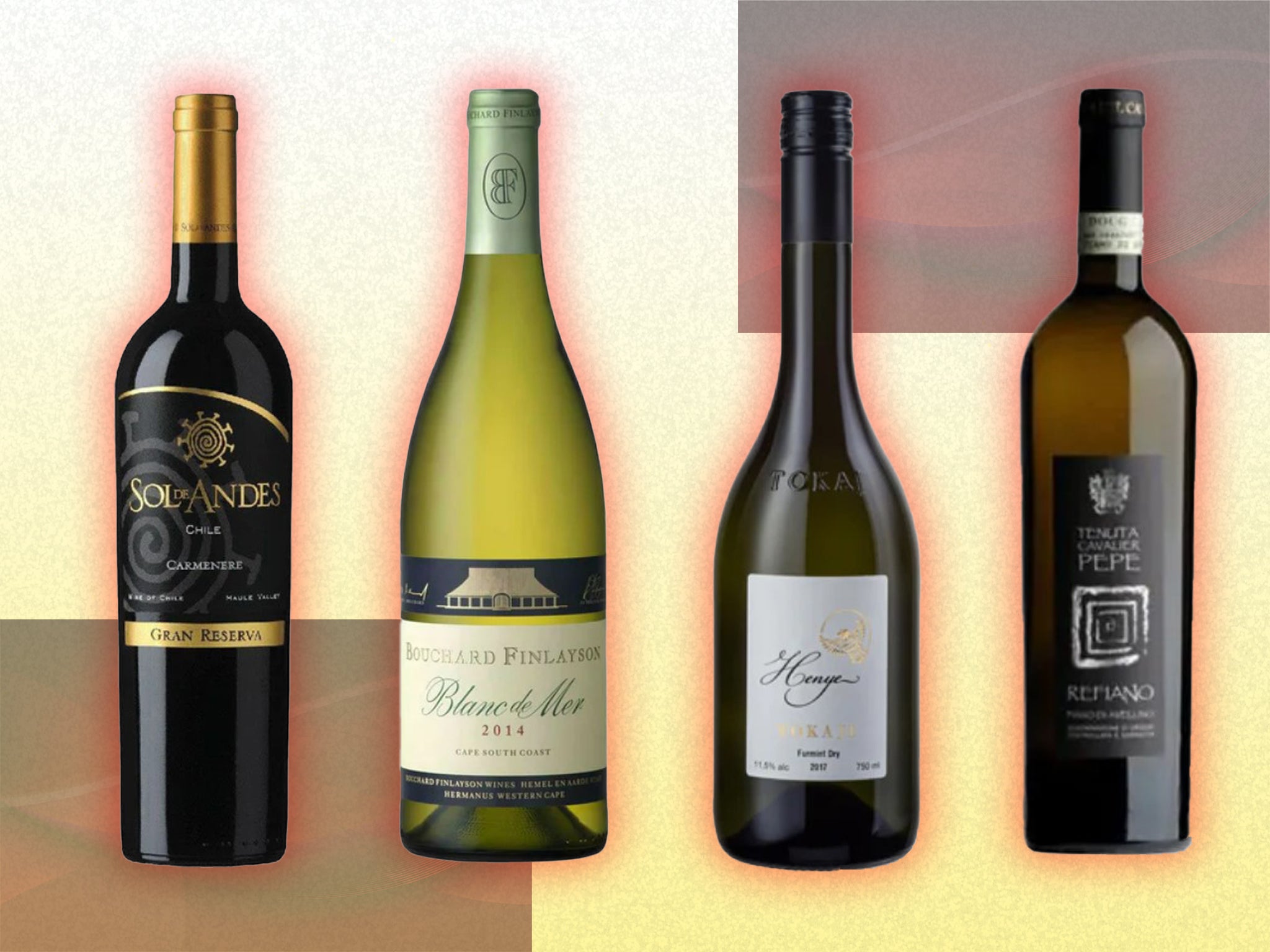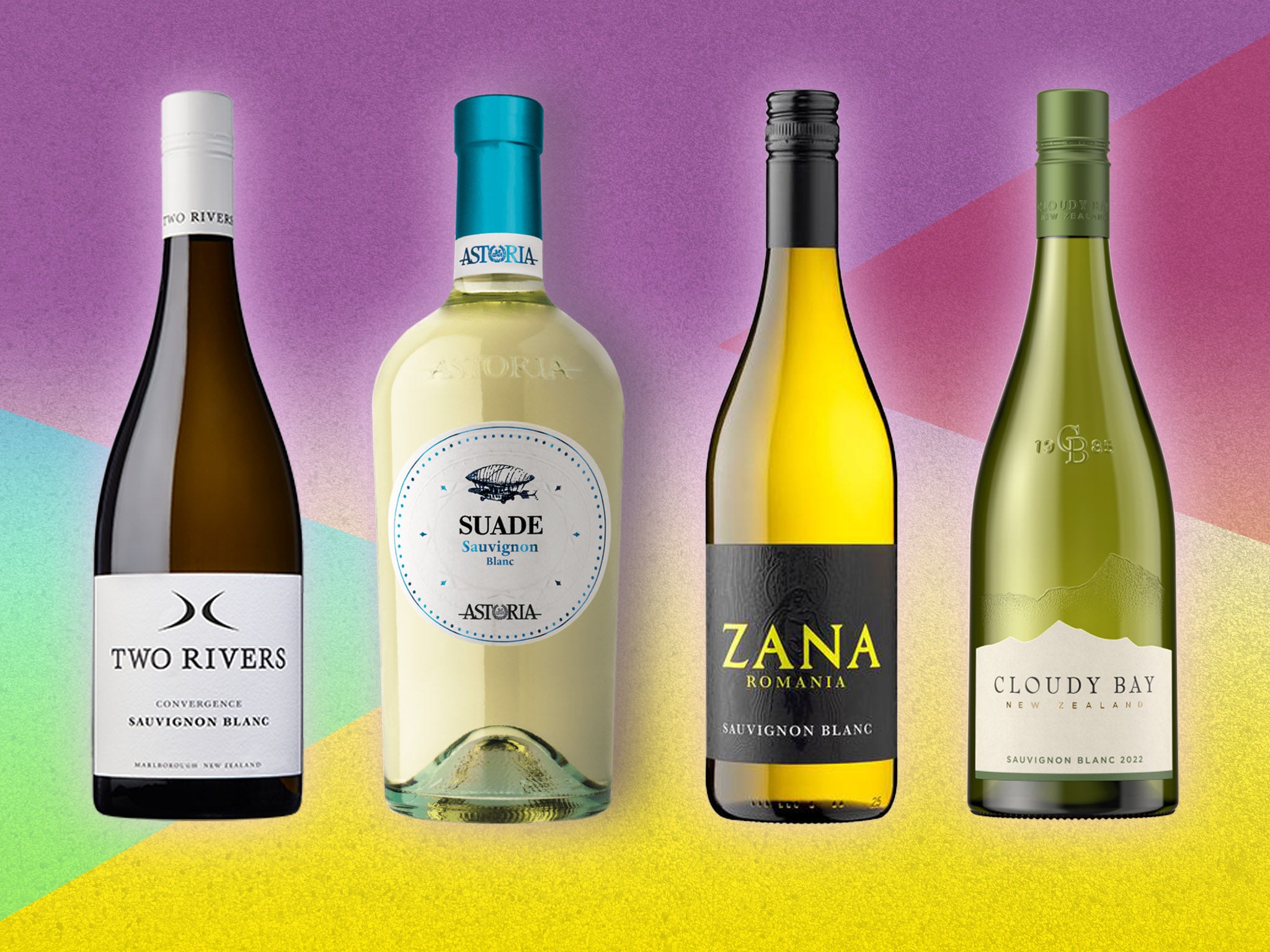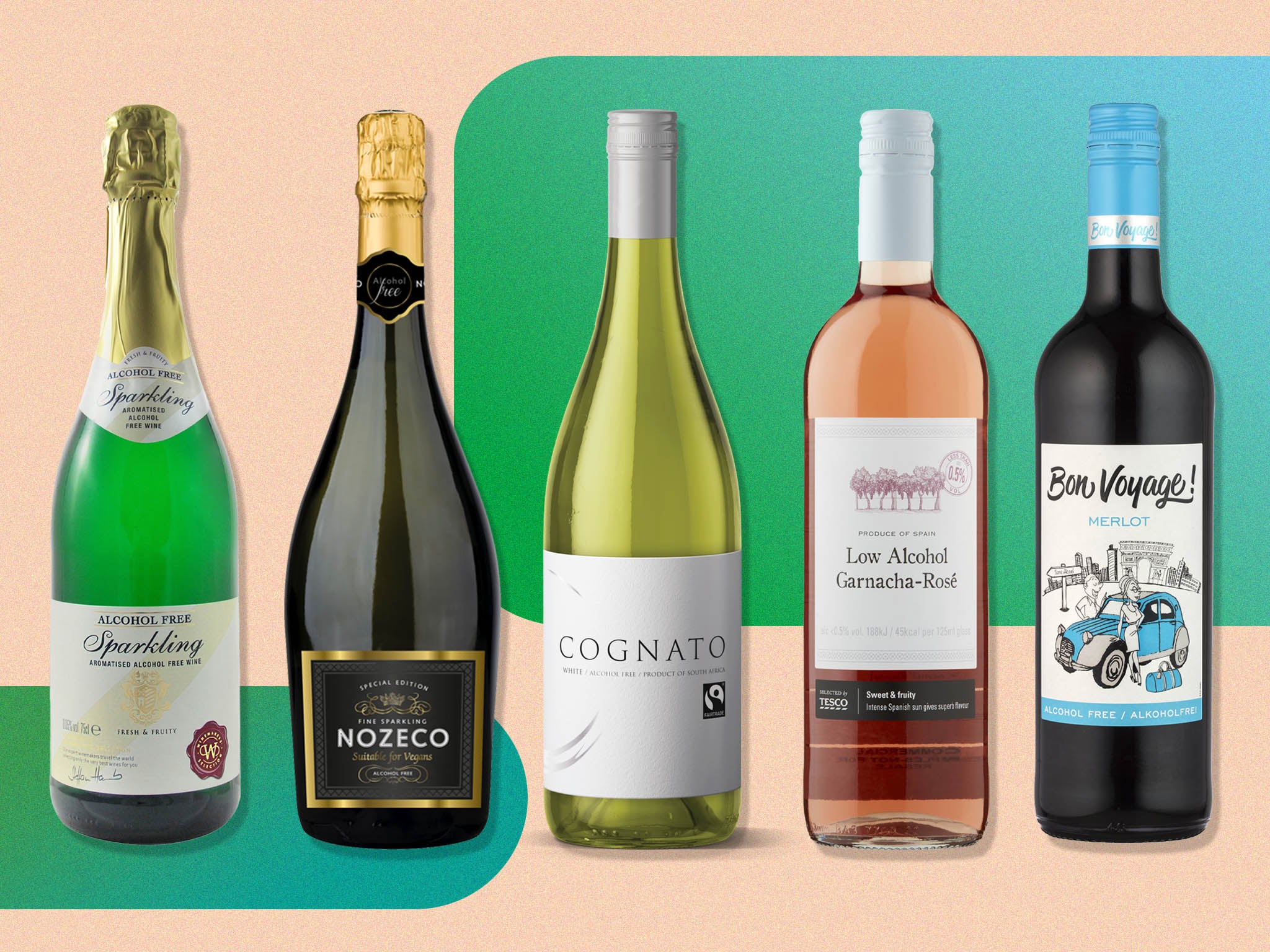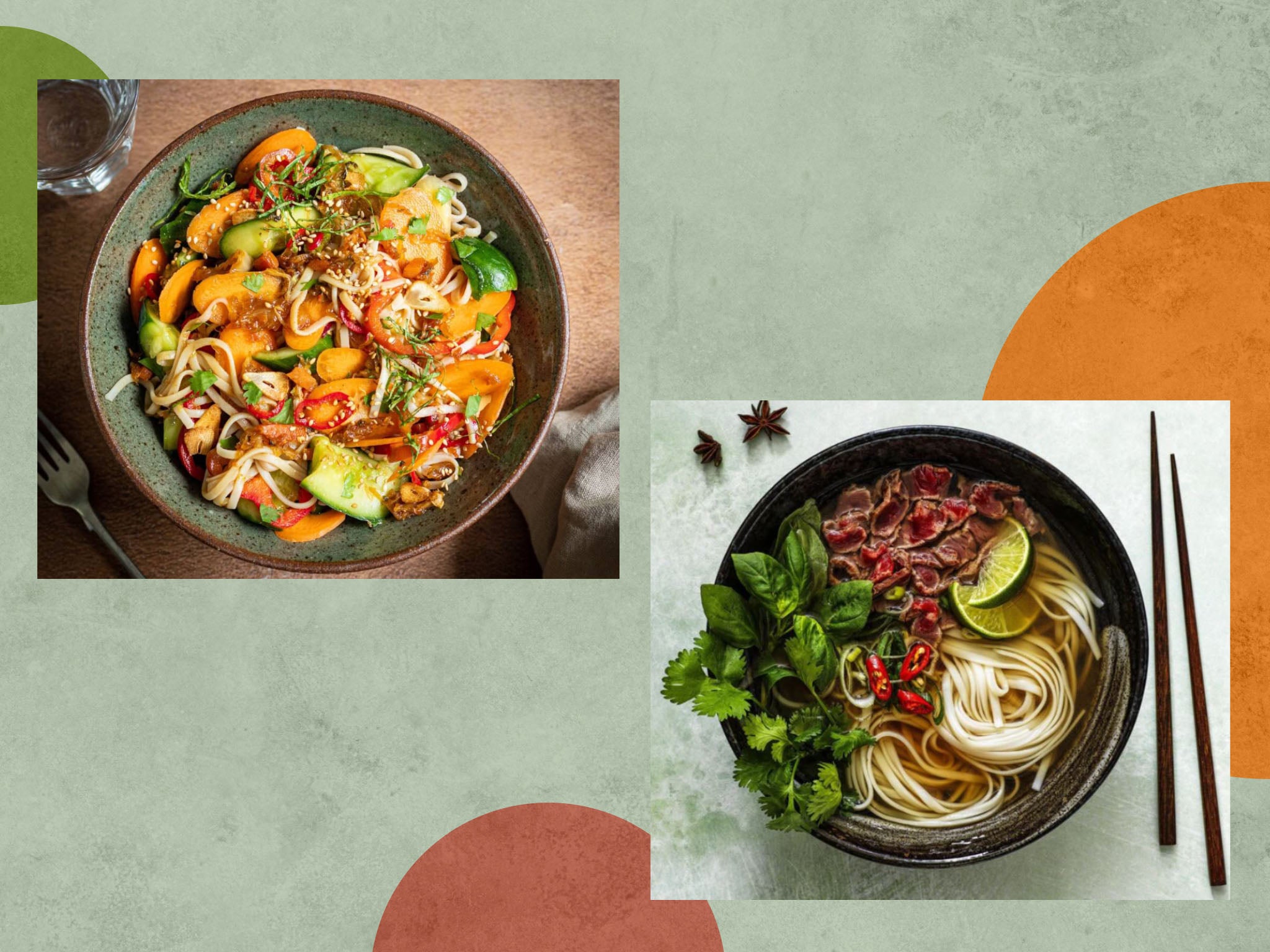The Independent's journalism is supported by our readers. When you purchase through links on our site, we may earn commission. Why trust us?
The best Italian red wines, from barolo to cabernet sauvignon
Sip these reds on their own or pair with delicious dishes inspired by Italian cuisine
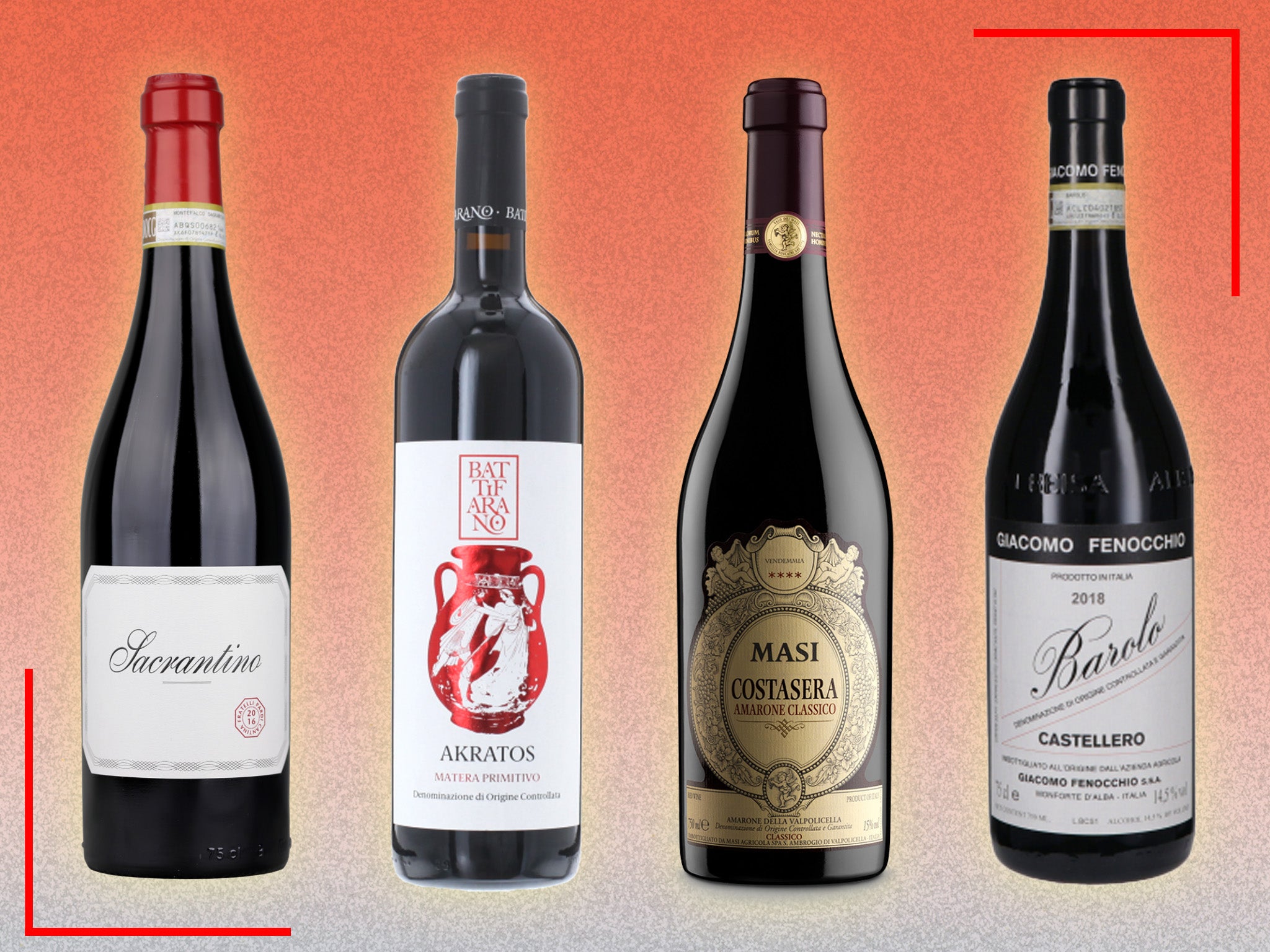
Italian red wine has always been held in high regard. With its range of styles, its ability to harness a huge variety of well-known and indigenous grape varieties and its almost innumerable wineries, Italy has something to offer every red-wine enthusiast.
Here, we sample some of the country’s finest reds, from the majestic barolo in the north to the rich and full-bodied amarone of the Veneto region.
We also tap into the intense barbera of central Italy and the aromatic primitivo wine from Basilicata at the heel end of Italy.
And we haven’t forgotten chianti – the wine whose most enthusiastic supporter appeared to be a slightly unsavoury character named Hannibal Lecter – or the first-rate wine that comes from the island of Sicily.
With historic wine-making techniques such as appassimento and ripasso allied to forward-thinking and progressive winemakers who understand their potential, Italy has something to please everyone.
How we tested
Most of the wines were sampled, as they should be, with the food that goes best with them, whether it’s a full-on meaty casserole or simply a slice (or hunk) of good Italian cheese. Others were tasted singly after the wine had been uncorked and allowed to breathe for several hours.
The best Italian red wines for 2023 are:
- Best Italian red wine overall – Astoria El Ruden Veneto rosso 2020: £15.17, Honestgrapes.co.uk
- Best value Italian red wine – Tesco Finest montepulciano d’Abruzzo 2019: £7, Tesco.com
- Best for an impromptu supper – Villa Sparina Barbera del monferrato DOC 2019: £20.50, Honestgrapes.co.uk
- Best organic and vegan Italian red wine – W/O terre Siciliane frappato 2021: £12.99, Laithwaites.co.uk
- Best Italian red wine for a special occasion – Fratelli Pardi sacrantino Montefalco sagrantino 2016: £40.95, Independent.wine
- Best Italian red wine to pair with pasta – Il Borghetto montedesassi 2016: £27, Hometipple.com
- Best amarone – Masi Costasera amarone della valpolicella classico 2017: £34.99, Waitrosecellar.com
- Best Italian red wine for a tasty casserole – Torrette Superiore Valle d’Aosta DOP la source 2016: £17.45, Corneyandbarrow.com
- Best for an Abigail’s Party-themed evening – Trambusti celsus chianti 2021: £11.99, Clickndrink.co.uk
- Best for pairing with traditional Italian dishes – Matera primitivo di Matera akratos 2019: £15.95, Leaandsandeman.co.uk
- Best classic Italian red wine – Giacomo Fenocchio bussia barolo 2018: £54.99, Majestic.co.uk
- Best ripasso – Scuola Grande valpolicella ripasso superiore 2020: £14.99, Thepipstop.co.uk
1Astoria El Ruden Veneto rosso 2020

- Best Overall
- Size 75cl
- ABV 13.5 per cent
- Grape Merlot, cabernet sauvignon, pinot noir, and marzemino grapes
Well, here’s something different. A red wine from the Veneto region where “el ruden” is the dialect word for rust, which, according to the winemakers, symbolises the “solidity and tenacity” of the wine in the glass. Happily, there’s no sign of rust in the flavour, which is the result of combining merlot, cabernet sauvignon and pinot noir along with a helping of dried marzemino grapes, giving an Amarone-type edge to the wine. Warm and heartening with intense dark-fruit flavours, it’s a wine to enjoy with a hearty red meat supper or simply by itself with a medium Italian cheese.
2Tesco Finest montepulciano d’Abruzzo 2019

- Best Value Italian red wine
- Size 75cl
- ABV 13.5 per cent
- Grape Montepulciano
A winner of the coveted gold award in the International Wine Challenge 2022, this is a rich, fruity and comforting inky-red wine from the Abruzzo hills overlooking the Adriatic. Made from the montepulciano grape with its complex flavours of ripe, red berries and hints of spice and herbs, it’s the perfect companion to any Italian pasta dish. Plus, at this price, it offers enormous value. Try it the next time you have spaghetti bolognese, for a culinary marriage made in heaven.
3Villa Sparina Barbera del monferrato DOC 2019

- Best For an impromptu supper
- Size 75cl
- ABV 14 per cent
- Grape Barbera
With a bottle that mimics the shape of a Roman amphora, here’s a bright barbera wine from a family-owned vineyard in the village of Monterotondo, close to Rome in central Italy. Intense and forward red berry flavours combine with soft tannins to provide a rich and generous mouthfeel with a long and persistent finish. The makers recommend it as an accompaniment to wild boar, which may be harder to find than the wine in the UK but don’t let that put you off. Spicy Italian sausages will do just as well.
4W/O terre Siciliane frappato 2021

- Best Organic and vegan wine
- Size 75cl
- ABV 13.5 per cent
- Grapes Frappato
W/O? It signifies “without compromise” which is winemaker’s Dino Taschetta’s mantra in making this organic and vegan Sicilian red from the local light and thin-skinned frappato grape. It’s chock-full of fresh and ripe red berry and fruit flavours, accompanied by floral notes and a touch of spice. All in all, it’s a highly drinkable, medium-bodied wine that comes in a bottle made entirely of recycled glass, thus ensuring a lower carbon footprint than many of its competitors.
5Fratelli Pardi sacrantino Montefalco sagrantino 2016

- Best For a special occasion
- Size 75cl
- ABV 14.5 per cent
- Grape Sagrantino
Serious money for a serious wine from an Italian winery that’s more than a century old. It’s made from sagrantino grapes hand-picked from a single vineyard near Montefalco in Umbria, the only area in Italy where this particular grape flourishes. Aged in Austrian oak barrels for 24 months followed by 9-12 months in steel, the bottled wine remains for 12 months in the cellar. The end result is a bold and complex wine with flavours of blackberry, damson and dark fruit, complemented by woody notes and hints of herb and spice. It’s not your everyday tipple but one that should make a special occasion even more memorable.
6Il Borghetto montedesassi 2016

- Best To pair with pasta
- Size 75cl
- ABV 13.5 per cent
- Grape Sangiovese
Here’s a wine to get excited about, a full-bodied muscular red from Il Borghetto, a small organic and biodynamic winery, founded in 1999 and located near the small village of Montefiridolfi near Florence at the most northern tip of the prestigious chianti classico area. English winemaker Tim Manning, who has worked in Oregon and New Zealand, uses his experience to meld these sangiovese grapes picked from two natural ampitheatres into a complex and layered wine with huge hits of red and dark fruit tempered by savoury balsamic and truffle notes. One to enjoy with something rich and warming.
7Masi Costasera amarone della valpolicella classico 2017

- Best Amarone
- Size 75cl
- ABV 14.72 per cent
- Grape Corvina rondinella molinara
A full-bodied, rambunctious red wine that’s the product of the appassimento technique – an ancient wine-making custom that still survives in the Veneto region of Italy. Healthy ripe grapes picked in the autumn are dried over the winter on bamboo racks until they are rich and raisin-like. This natural partial dehydration produces a huge concentration of colours, aromas and flavours in the wine, so be prepared to be dazzled by rich and layered flavours of damson and dark fruit with hints of chocolate and coffee. It will keep for decades but you can enjoy it now with hearty meat dishes or an Italian cheese.
8Torrette Superiore Valle d’Aosta DOP la source 2016

- Best For a tasty casserole
- Size 75cl
- ABV 12.5 per cent
- Grape Petit rouge, fumin
A limited-production red wine from Italy’s mountainous Valle d’Aosta made from the indigenous petit rouge grape with a dash of another local grape variety, fumin. The “superiore” tag indicates it’s been aged for at least eight months. Jam-packed with moreish fresh and dried dark fruit flavours allied to notes of pepper and spice, it’s smooth on the tongue with a velvety feel and a long and impressive finish.
9Trambusti celsus chianti 2021

- Best For an Abigail’s Party-themed evening
- Size 75cl
- ABV 12.5 per cent
- Grape Sangiovese and canaiolo nero
There was a time when all chianti was like this, presented in a fiasco, a bulbous bottle wrapped in a blanched straw basket. It signalled that this was something a little out of the ordinary – and you could always stick a candle in the bottle once you’d drank all the wine. Rising costs and a bid to make chianti more of a mainstream wine means most of them have gone, but it’s still possible to find the bottle here and there, such as this example made from 90 per cent sangiovese and 10 per cent canaiolo nero. It’s also DOCG (Denominazione di Origine Controllata e Garantita, which translates as controlled and guaranteed designation of origin), the highest classification Italian wines can be awarded, which means plenty of that beguiling cherry and red fruit flavour.
10Matera primitivo di Matera akratos 2019

- Best For pairing with traditional Italian dishes
- Size 75cl
- ABV 14 per cent
- Grape Primitivo
From the Basilicata region at the heel end of Italy, where the land has been cultivated by the same family for more than five centuries, comes a rich red made from the local primitivo grape. Made with minimal intervention, it’s claimed to be the modern version of a wine that in ancient times could only be drunk by the Greek god Dionysus. Nowadays, a slightly wider clientele will be able to enjoy this aromatic and intense red with its layered red berry flavour and piquant hints of spice.
11Giacomo Fenocchio bussia barolo 2018

- Best Classic wine
- Size 75cl
- ABV 14.5 per cent
- Grape Nebbiolo
There’s a reason barolo is considered by many to be Italy’s greatest wine. Made from the nebbiolo grape in the northern region of Piedmont, it has the ability to age superbly, and is a powerful yet fragrant wine. Giacomo Fenocchio is the fifth generation of his family producing this Italian classic in a low-intervention way he terms “radical traditionalism”. This example has those deep and intense flavours of pure and ripe red and dark fruit along with hints of spice and mint and velvet tannins. It will keep for a good 20 years or more but can be enjoyed now if you can’t wait that long.
12Scuola Grande valpolicella ripasso superiore 2020

- Best Ripasso
- Size 75cl
- ABV 14.5 per cent
- Grape Corvina, rondinella and molinara
Valpolicella is where the young wine made from the local corvina, rondinella and molinara grapes is left to ferment for a second time on the skins of the dried grapes used to make amarone and recioto wines. As a result, these ripasso wines come with an extra depth and clarity that shows off the red fruit flavours. Smooth and velvety with notes of cocoa and a hint of vanilla, this is a wine to enjoy with any meat dish or a medium to hard cheese.
The verdict: Italian red wine
Big flavours and big wines can’t help but impress, whether it’s the bold, single vineyard Fratelli Pardi sagrantino, the rich and satisfying Giacomo Fenocchio bussia barolo or the full-bodied Masi Costasera amarone.
The lesser-known but equally rewarding wines such as the organic “without compromise” Terre Siciliane frappato and the muscular Il Borghetto montedesassi from near Florence also impressed.
But, it’s the intense and heartening Astoria El Ruden Veneto rosso, with its ripe dark fruit flavours and enveloping richness, that is our best buy.
Having a romantic date night? These are the best vinos that’ll impress your partner
